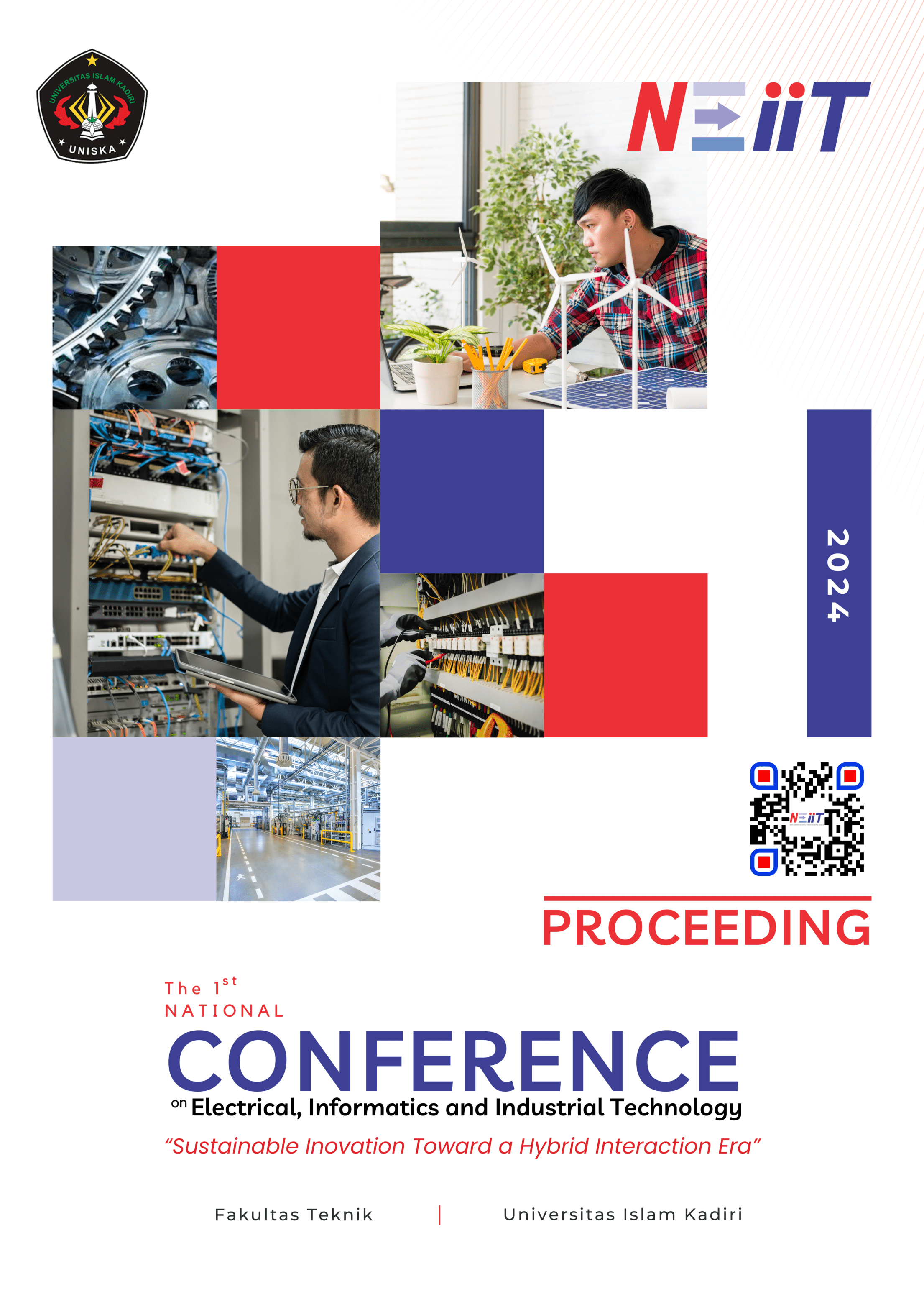Rancang Bangun Alat Pengering Pakaian Berbasis IoT
Keywords:
Esp8266, IoT, Sensors, DryerAbstract
In an era of ever-developing technology, household appliances are increasingly adopting the Internet of Things (IoT) concept to increase functionality and user comfort. One application that can be improved is an IoT-based clothes dryer. The process of drying clothes itself is very dependent on sunlight, so during the rainy season the drying process is not optimal. This research aims to design and implement a clothes dryer connected to the internet. The research methodology includes hardware design using and integrating sensors to control the drying process, as well as developing an interface application to facilitate interaction with users. Tests were carried out to evaluate the performance of the tool based on measurement accuracy, reliability of the IoT communication system, and dryer performance in various room temperature conditions. To make an IoT-based clothes dryer, the Esp8266 component is needed as the main control, DHT 22 and Ds18b20 sensors for humidity detection and temperature detection, a load cell for clothes weight detection, and an I2C LCD as an information display. The process of drying clothes using one component is a dryer. The dryer will work when the room temperature is below 50o because when the room temperature is below a predetermined level, the drying process occurs. With an error percentage value of 1.55%, the accuracy of the DHT22 sensor is 98.45%. With a load cell reading error percentage value of 0.49%, the load cell accuracy in this study was 99.51%.
Downloads
References
M. I. Putri, “RANCANG BANGUN ALAT PENGERING PAKAIAN OTOMATIS BERBASIS ARDUINO,” Jurnal Perencanaan Sains, Teknologi dan Komputer (JuPerSaTek), vol. Vol. 2, No. 1, pp. 181–188, Dec. 2019.
M. Jamil and M. Said, “The Utilization of Internet of Things (IoT) for Multi Sensor Data Acquisition using Thingspeak,” VOLT : Jurnal Ilmiah Pendidikan Teknik Elektro, vol. Vol. 3, No. 1, pp. 13–18, Apr. 2018.
D. Erwanto, D. Wahyudi, and R. Fatkhur Rizal, “Sistem Electronic Nose Untuk Deteksi Aroma Pada Fasilitas Kamar Mandi Berbasis IoT,” JOURNAL ZETROEM, vol. 5, no. 1, 2023, doi: 10.36526/ztr.v5i1.2620.
W. Adhiwibowo, A. F. Daru, and A. M. Hirzan, “Temperature and Humidity MonitoringUsing DHT22 Sensor and CayenneAPI,” TRANSFORMATIKA , vol. Vol. 17, No. 2, pp. 209–214, Jan. 2020.
M. M. Febrianto, F. M. Akbar, and J. Bintoro, “Prototipe Alat Pengering Pakaian Otomatis Berbasis Arduino UNO,” Jurnal Autocracy, vol. Vol. 4, No. 1, pp. 1–9, Jun. 2017.
M. A. Fikri, D. Erwanto, and D. E. Yuliana, “Rancang Bangun Alat Prediksi Kondisi Tubuh Ideal Menggunakan Metode Fuzzy Logic Sugeno,” Setrum : Sistem Kendali-Tenaga-Elektronika-Telekomunikasi-Komputer, Jun. 2018, doi: 10.36055/setrum.v7i1.3409.
D. E. Yuliana, “Temperature And Humidity Control Based On Quail Eggs,” JEEMECS (Journal of Electrical Engineering, Mechatronic and Computer Science), vol. 3, no. 2, 2020, doi: 10.26905/jeemecs.v3i2.4354.
E. W. Patton, M. Tissenbaum, and F. Harunani, “MIT App Inventor: Objectives, Design, and Development,” in Computational Thinking Education, 2019. doi: 10.1007/978-981-13-6528-7_3.
A. H. Saptadi, “Perbandingan Akurasi Pengukuran Suhu Dan Kelembaban Antara Sensor DHT11 Dan DHT22,” Jurnal Infotel, vol. 6, pp. 49–56, Nov. 2014.

Downloads
Published
Issue
Section
License
Copyright (c) 2024 Muhammad Akmal Ghufron, Diah Arie Widhining Kusumastutie, Farrady Alif Fiolana (Author)

This work is licensed under a Creative Commons Attribution-NonCommercial-ShareAlike 4.0 International License.




